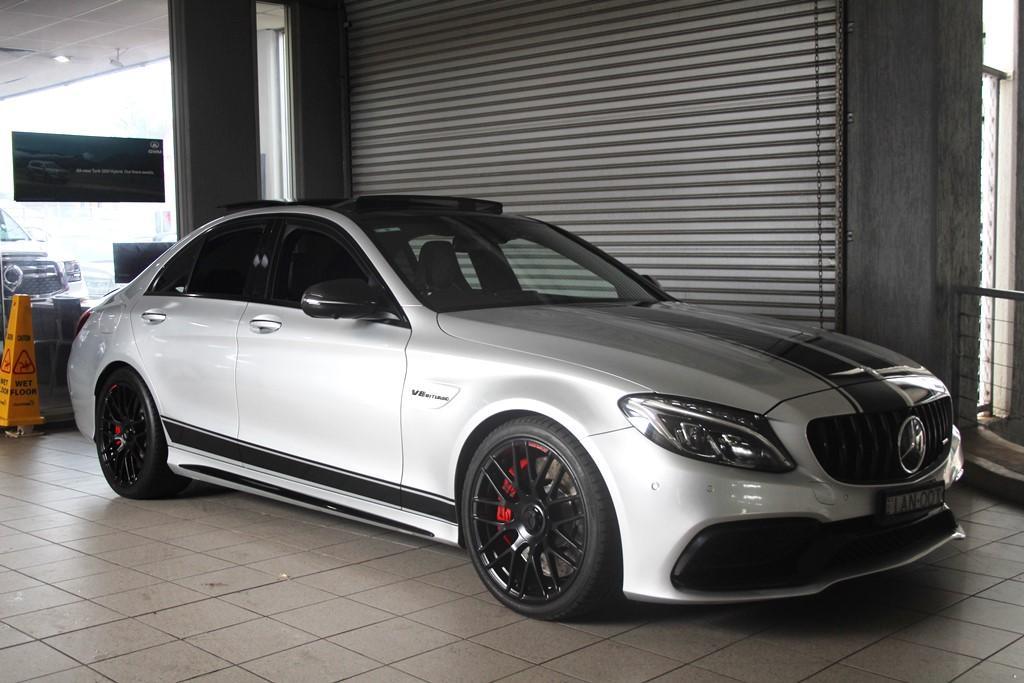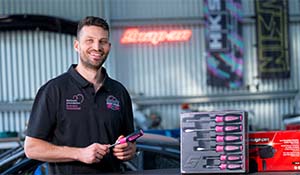FEATURE – RM Sothebys Pedal Car Auction
Words: Mike Ryan
Photos: Courtesy of RM Sothebys
This past June, RM Sothebys hosted a “car” auction with a difference. Dubbed the ‘Pedal Power Auction,’ the online-only sale was devoted exclusively to kids’ pedal cars.

A total of 53 lots were offered from the collection of Bruce Callis, a native of Illinois and senior executive with the State Farm Insurance organisation in the US. Callis’s pedal car collection was arguably one of the best and biggest in the world. Of that collection, the vast majority had been restored to operation and as-new appearance, too.

From Big to Small
Callis came to small cars after owning a number of full-size vintage automobiles, although that collection never matched the scale of what he would acquire later!
Like most collectors, Callis started his pedal car collection with one; a 1963 “Tee Bird” that he picked up at an antique store in the late 1980s. Decades earlier, Callis had purchased the same model for his young son Kevin, so it had sentimental value.
The plan was to clean, repair and restore the battered Tee Bird to its former glory, with Callis calling on his grandson, Michael Ready, to assist. The bonding experience in restoring that car fuelled Callis to do another. And another. And another. . . .

Expert Involvement and the Ageing Process
Being playthings that were used and abused when they were new, the pedal cars that Callis acquired were almost invariably like that first one – worn, broken and with missing components.
As the collection started to grow, the restorations became increasingly sophisticated, to the point where metalsmiths, woodworkers and fibreglass craftsmen were called upon.

To illustrate the difference between what these pedal cars were like when purchased, Callis and Ready chose to leave the occasional vehicle in unrestored condition as a ‘before and after’ exercise.
While the obvious challenge with many of these cars was in restoring them after years of play and longer periods of neglect, bigger challenges came in identifying them, and more specifically, ageing them.

As these cars – and boats and trucks and planes – had no specific model year cycle like full-sized cars, tracking their age was no easy process.
Construction techniques gave a clue in some instances, while the ageing was made a little easier when the pedal car was based on a recognised production automobile, like a 1965 Mustang, for example. But when these kid-sized cars had no obvious inspiration, Callis and Ready turned to old retail catalogues, which helped narrow down the release years of models like the ‘Probe,’ ‘Jet Hawk’ and ‘Hot Rod Racer’ that had no obvious build year. Even then, many models in the Callis collection have a ‘Circa’ attached to their date as a definitive production year proved impossible.

53 into 10
Over a ten-year period from 1988, Callis acquired and restored 53 pedal cars, with the earliest dated as 1927 and the newest from C1981, but most came from the 1950s and ’60s.
What’s remarkable with some of these cars is how detailed and sophisticated they were for toys. Features like pneumatic tyres, working lights and real chrome trim featured in some models from the 1930s, while others featured opening bonnets, working horns and skidsteer-style steering.

One of the oldest pedal cars in the Callis collection was arguably the most unusual, too. The ‘Scout Master’ was already unusual in that it was a pedal aeroplane, not a car, but its build year of 1929 puts that into context, no doubt inspired by Charles Lindbergh’s solo flight across the Atlantic a couple of years earlier. Where most pre-war pedal cars were made of tin or steel, the Scout Master combined a hardwood fuselage with a tin seat, wing, nosecone and propeller. Made by Sidway-Topliff in Pennsylvania, the example in Callis’s collection was also one of the few he chose to leave in unrestored condition.

Not the newest, but certainly the most unusual unit in Callis’s collection was the ‘Probe 3’ from C1969. While it featured no recognisable automobile in its styling, the Probe 3 was reminiscent of the Ford ‘Gyron’ concept from 1961. What made this particular pedal car unusual was its operation. Where most used a steering wheel acting directly on the front axle, the Probe 3 used skidsteer-style handles. Pull back the right handle and push forward the left one and the Probe 3 turned right, and vice versa. A variation with four wheels and a conventional steering wheel was also offered on this model that was built by American Machine and Foundry (AMF); a company better known for making bowling alley equipment and their brief ownership of the Harley-Davidson motorcycle company.

The Austin ‘Junior 40’
While kids’ cars are, understandably, a commercial venture, the Austin J40 was a little different. The ‘Junior 40’ (later simplified to J40) came about, in part, as the result of a government initiative.
During World War II, the British government sought ways to re-employ Welsh coal miners unable to work in the mines due to pneumoconiosis (aka Black Lung Disease) and offered incentives to companies who could employ them. Austin was one to step up. While the demands of actual car manufacture would be too great, Austin’s boss Leonard Lord thought the former miners could be ideal for his pedal car project, which had started in 1946.

With government support, a factory was purpose-built in South Wales, the miners were retrained and supported with in-house medical care. Austin would supply the plans, equipment and all the materials, which included metal off-cuts from the manufacture of full-size Austin cars
When the factory opened in 1949, workers started producing the less familiar ‘Pathfinder Special,’ which was in the style of a midget speedway racer, as well as the J40, although the latter car grew to be more popular.

Styled to resemble Austin’s A40 Devon production car, the J40 was relatively sophisticated for a child’s toy, with pneumatic tyres, an opening bonnet and boot, functioning lights and horn, a hand brake, padded seat and a dummy engine bay that used actual (non-functioning) spark plugs. The pedals were also adjustable to cater for growing children.
From an initial workforce of around 40 men, the factory’s roster grew to a peak of more than 500 in the mid-1960s, although by this stage they were also producing several small components for full-size BMC cars.

While J40 production was intended primarily for the United States, they were shipped all over the world and found a market in the UK, too, including a young Prince Charles, who was gifted a specially trimmed and equipped version in 1952. J40s were also used in fairground rides and (very) junior driver training initiatives.
When production of the J40 and Pathfinder ended in 1971, a combined total of 32,098 had been built. The factory continued to produce other items for Austin, and later Rover, cars until it closed in 1999.

Auction Surprise
Following Callis’s passing in 1998, the pedal car collection remained in the family and was displayed in the McLean County Museum of History in Bloomington, Illinois. At the conclusion of that exhibition this year, the family put the cars to auction through RM Sothebys.
COVID-19 has forced most auction houses to go online with their sales and RM Sothebys have been no exception, so the Callis collection would be offered online only, from 17 to 24 June.

Being something different from their normal automotive auctions, the Pedal Power Auction attracted an abundance of new bidders, with 44 per cent described at being new RM Sothebys clientele.
All lots were offered with no reserve and conservative estimates; perhaps a little too conservative, as not only was there a 100 per cent clearance rate, 85 per cent exceeded their pre-auction estimate, some doubling and even tripling their initial figures.
Those individual sales and a total result of US$149,334 (AU$192,150 approx.) was no doubt a pleasant surprise for RM Sothebys, as well as the Callis family, who planned to donate proceeds from the auction to the McLean County Museum.

Top seller in the timed online auction was a C1955 Austin J40, which more than trebled its pre-auction estimate to sell for US$9,900 (AU$12,930 approx.).
Perhaps one of the best-known kids’ cars thanks to its appearance in the ‘Settrington Cup’ at the annual Goodwood Revival in the UK, the J40 pedal cars were intended primarily for the US market when new. While the history of this particular J40 is unrecorded, it was one of the many outstandingly restored examples in the collection.
Next best was a C1941 Lincoln Zephyr, which accrued 65 bids and achieved an impressive $8,700 (AU$11,370 approx.) against a US$3,000 high estimate. Rounding out the top three was a C1935 Chrysler Airflow. Produced by Steelcraft and featuring working headlights, the Chrysler pedal car easily surpassed its pre-sale high estimate of US$1,800 and eventually sold for $6,600 (AU$8,630 approx.). The aforementioned Scout Master pedal aeroplane sold for US$5,520 AU$7,200 approx.) and the Probe 3 for US$2,280 (AU$3,000 approx.).
For full results and more details from this auction, go to:https://rmsothebys.com/













